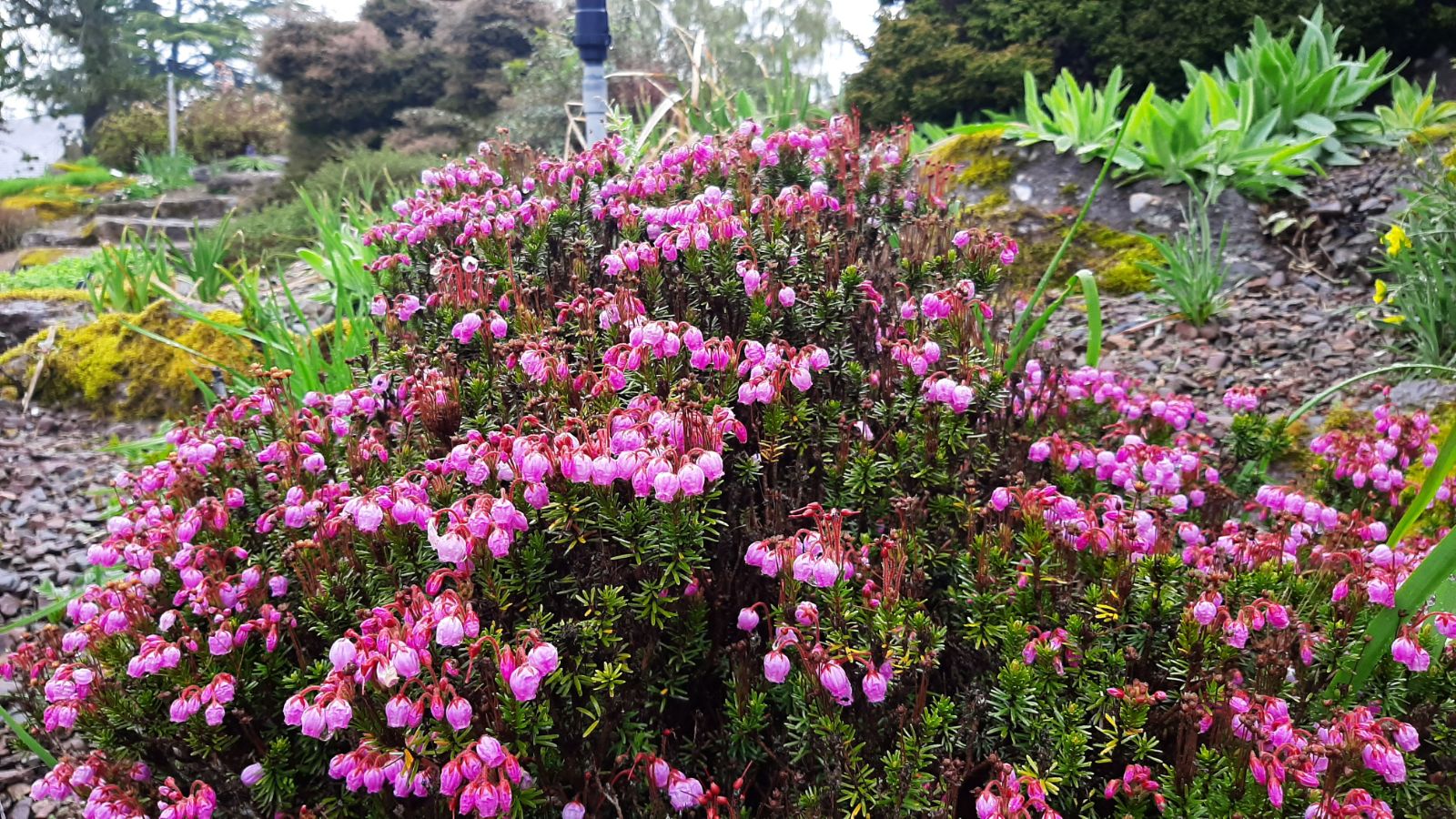Phyllodoce × intermedia
Credits
Article from Bean's Trees and Shrubs Hardy in the British Isles
Recommended citation
'Phyllodoce × intermedia' from the website Trees and Shrubs Online (treesandshrubsonline.
Genus
Synonyms
- Menziesia intermedia Hook.
- P. hybrida Rydb.
- P. pseudoempetriformis Stoker, nom. prov.
A low evergreen shrub 6 to 9 in. high, of tufted habit, densely furnished with leaves. Leaves 1⁄4 to 5⁄8 in. long, 1⁄16 to 1⁄12 in. wide; linear, rounded at the tip, very shortly stalked, minutely toothed on the margin, dark glossy green. Flowers solitary, on slender, glandular-hairy stalks 1⁄2 to 3⁄4 in. long, produced during April from the leaf-axils near the end of the twigs. Corolla pitcher-shaped, bright reddish purple, 1⁄4 in. long, scarcely so wide; with five rounded teeth at the orifice. Calyx-lobes five, ovate, 1⁄8 in. long, glabrous; style exposed.
A variable natural hybrid between P. empetriformis and P. glanduliflora, which occurs frequently in the wild where the two species grow together. The plant described above is the commonest form of the hybrid in cultivation and was for long grown as P. empetriformis, though it clearly differs from that species (q.v.) in its urn-shaped corolla and bushy habit. The error was pointed out by Dr Fred Stoker in New Flora and Sylva, Vol. 12, pp. 38–41 (and see Dr Camp’s article in the same volume, pp. 207–11). The wild hybrids are said to combine the characters of the parents in various ways, but their usual corolla-shape is cylindric-campanulate, i.e., narrower than in P. empetriformis, but not urn-shaped as in the other species. The plant described above, which is of unknown origin, inclines to P. glanduliflora in having the corolla more or less urn-shaped, though not so constricted at the mouth, while the influence of P. empetriformis shows in the colour of the corollas and in their being almost glabrous outside.
The common form of P. × intermedia was given the clonal name ‘Fred Stoker’ by Dr Camp, to distinguish it from other forms of the cross. It is perhaps the most satisfactory of the phyllodoces, being easy to grow in peaty soil. It received an Award of Merit when shown by Messrs Marchant under the name P. × hybrida.



